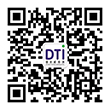Children's pull-on toys American ASTM F963 testing guide
Date:2025-06-17 10:50:42 Classification
:【question】 Visits:
According to the ASTM F963 standard developed by the American Society for Testing and Materials (ASTM), children's pull-on toys need to undergo a series of safety tests to ensure that they meet safety requirements during design, manufacturing and use. The following is the ASTM F963 test guide for children's pull-on toys.
1. Physical and mechanical properties
1.1 Impact test
- Purpose: To evaluate the structural integrity of toys when they are impacted.
- Method: Drop the toy freely from a certain height to observe whether it breaks or produces small parts.
1.2 Drop test
- Purpose: To evaluate the durability of toys when they fall.
- Method: Drop the toy from a certain height multiple times to check whether it is damaged or produces small parts.
1.3 Tension test
- Purpose: To evaluate the firmness of toy parts and prevent small parts from falling off.
- Method: Apply a certain tensile force to the detachable parts of the toy to check whether it falls off.
1.4 Pressure test
- Purpose: To evaluate the structural stability of the toy when it is under pressure.
- Method: Apply a certain pressure to the toy to observe whether it is deformed or broken.
1.5 Flexure test
- Purpose: Evaluate the durability of toys when bent.
- Method: Apply a certain bending force to the toy to check whether it breaks or produces small parts.
2. Combustion performance
2.1 Horizontal combustion test
- Purpose: Evaluate the flame retardancy of toy materials.
- Method: According to the requirements of 16 CFR 1500.44, the toys are subjected to horizontal combustion test, which stipulates that the self-burning speed along the main axis of the toy after ignition should be less than 2.5 mm/s.
3. Chemical properties
3.1 Heavy metal migration test
- Purpose: Evaluate whether there is harmful heavy metal migration in toy materials.
- Method: Test the migration of eight toxic elements (lead, arsenic, antimony, barium, cadmium, chromium, mercury, and selenium) in toy materials.
3.2 Total Lead Content Test
- Purpose: To evaluate the total lead content in toy materials.
- Method: Test using CPSC-CH-E1001-08.1 (metal substrates), CPSC-CH-E1002-08.1 (non-metal substrates) and CPSC-CH-E1003-09 (paints and similar surface coating materials).
3.3 Phthalates Test
- Purpose: To evaluate whether toy materials contain harmful phthalates.
- Method: Test the content of six phthalates (DEHP, DBP, BBP, DINP, DIDP, DNOP) in toy materials.
4. Packaging Information Requirements
4.1 Safety Labeling
- Purpose: To ensure that consumers can understand the safety information of toys when purchasing.
- Method: Indicate the minimum age for design use on the retail packaging of toys and label warning information when necessary.
5. Special requirements
5.1 Length of cords and straps
- Purpose: To prevent the risk of choking of children due to excessively long cords or straps.
- Method: Test the length of the cord or strap to ensure that it does not exceed 70 cm when unloaded.
5.2 Impaction hazard
- Purpose: To prevent the risk of choking of children due to impaction of toy parts.
- Method: Test whether the toy parts can enter or pass through the entire cavity of the supplementary test device.
5.3 Folding device and hinge
- Purpose: To prevent the toy from accidentally folding or collapsing during use.
- Method: Test the firmness of the folding device and hinge to ensure that it will not accidentally move or collapse during normal use.
Through the above tests, it can be ensured that children's pull-on toys meet the safety standards of the US market, thereby protecting the health and safety of children.




 Shen Gongwang Security: 44030602006947
Shen Gongwang Security: 44030602006947